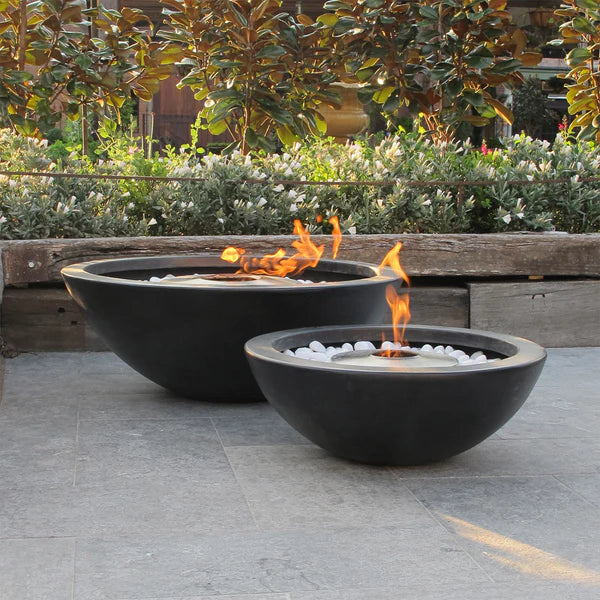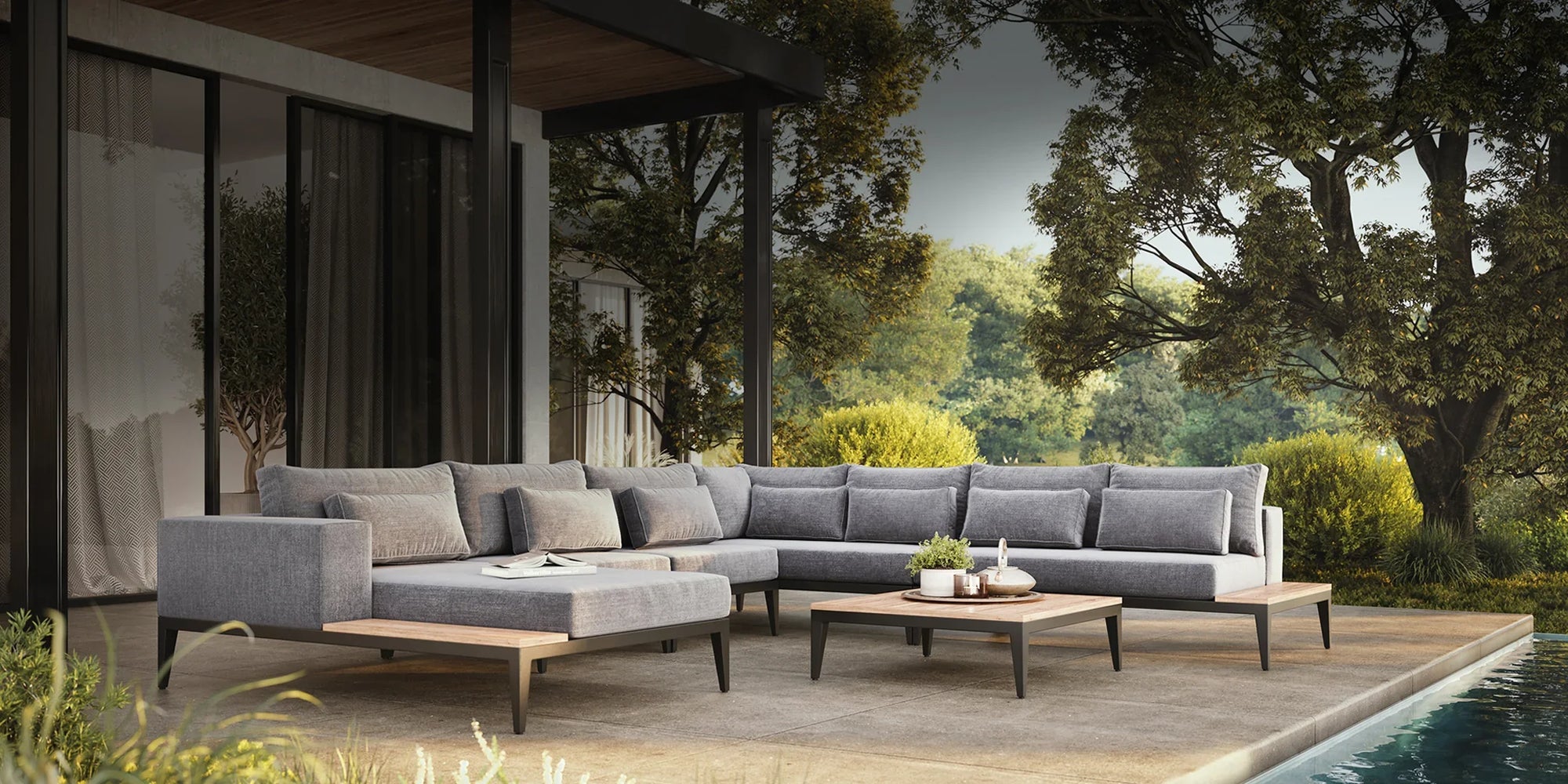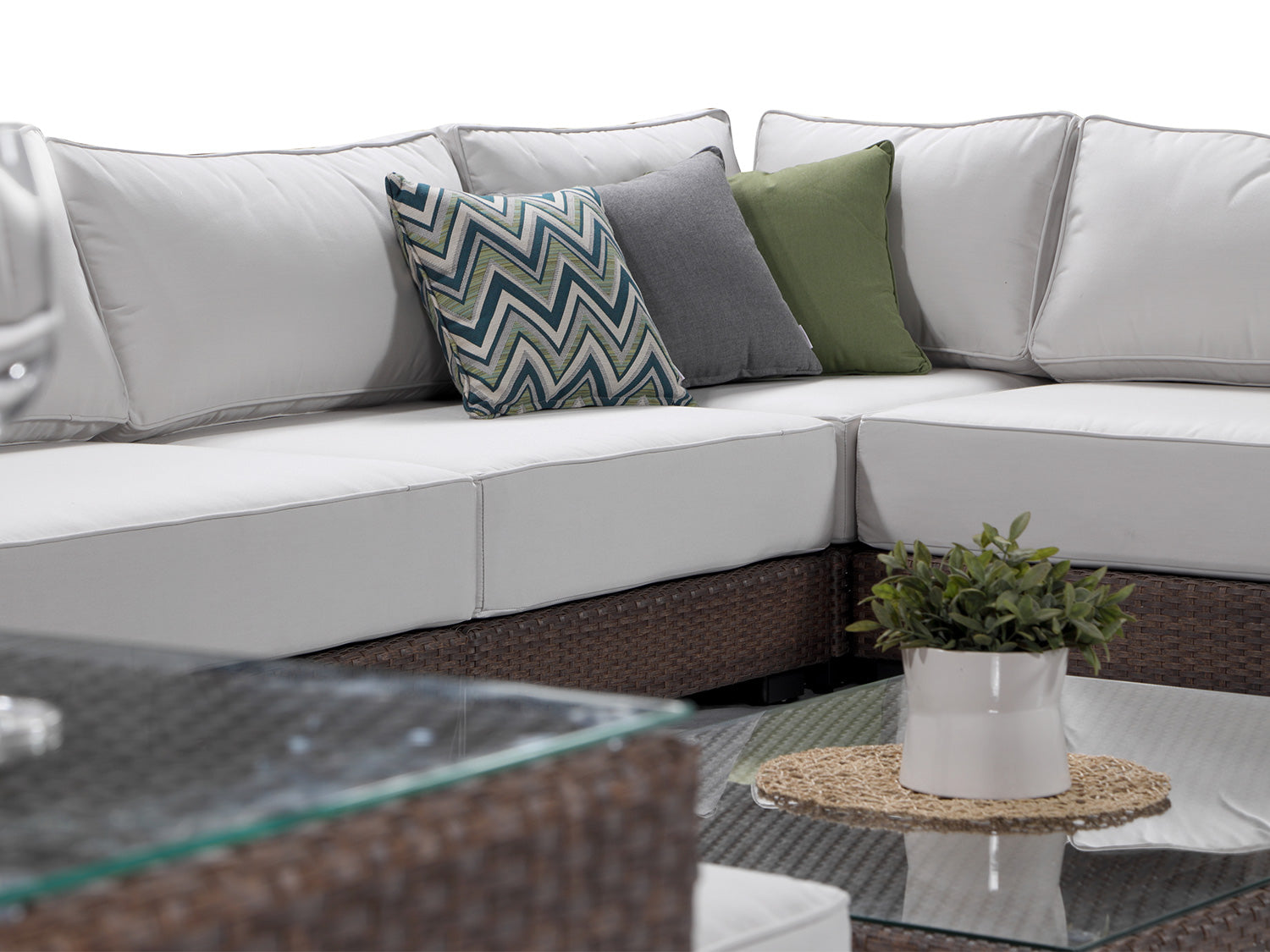As the warmer seasons approach, you’ll want to make your garden look good for summer. Whether you’re expecting a summer of parties, barbeques, dining al fresco, or spending time with family, you’ll want your garden furniture to look the part. Cleaning your garden furniture not only ensures it looks its best, but also makes it last for several seasons to come.
Follow this guide to learn how to easily clean all kinds of garden and patio furniture, and keep it pristine for the warmer months ahead.
When to clean garden furniture
You should try to clean your garden furniture at least twice per year; aiming to do so around the beginning of the garden season in spring, and then again at the end in autumn when beginning to winterise your garden. However, there is nothing wrong with cleaning your garden furniture more often than this - just make sure you’re not wearing down the material of your furniture whilst doing so.
It is incredibly important to clean your garden furniture on a dry day. This means that your furniture will be able to dry naturally and absorb any oils or vanishes, without the risk of it being washed away by the British rain.
Tools and products needed to clean garden furniture
Before going straight to the cleaning process, you should first get your tools and cleaning products ready - along with any protective clothing, such as goggles, rubber gloves and overalls, to shield yourself from flying dirt and debris.
The general tools you will need to clean your garden furniture are:
- Bucket
- Soft-bristled hand brush
- An old toothbrush
- Microfibre cloth
- Sponge
- Garden hose with nozzle (or a pressure washer)
And the cleaning products you will need to clean your garden furniture include:
- Water
- Mild detergent (like washing up liquid)
- Specialist garden furniture cleaner (wood, metal or plastic)
Remember to always be gentle and take your time, ensuring not to wear down or tarnish your garden furniture as you clean - opt for mild and specialist cleaners, rather than abrasive cleaners and products.
How to clean garden furniture
Cleaning your garden furniture is both incredibly important and simple to do - with no professional services required. Simply identify your garden furniture’s material and follow these helpful guides.
How to clean rattan furniture

These days, rattan garden furniture isn’t always made from a woven, natural material. Instead, many people choose to opt for PE rattan garden furniture - woven resin, designed to the effect of natural wicker rattan. If you’re unsure what material rattan you have, use this guide to identify your rattan furniture.
Natural rattan can be very difficult to clean, as the material is not particularly weather-resistant and is prone to cracks and brittling. We recommend rinsing the furniture down with a garden hose or low setting on your pressure washer, to wash away any dirt or debris in between the woven gaps, before leaving it to naturally dry.
Alternatively, resin rattan furniture, like our luxurious Milano, Verona and Tosca collections, can be cleaned just like any other piece of plastic garden furniture. Simply wash with soap and water, rinse the furniture down and treat generously with a plastic garden furniture protection spray.
How to clean wooden garden furniture
Many higher-quality wooden garden furniture pieces are made of resistant wood types, such as teak and eucalyptus, and are considered to be weather-resistant - like the wooden features in our Moderno collection. However, you may come across cheaper garden furniture made of softwoods, such as beech and spruce, that will require a little more care when cleaning.
All wooden garden furniture should be gently cleaned down using soap and water or a specialist wood cleaner, and a soft-bristled brush or sponge - working with the grain. You can even use an old toothbrush to get into any nooks and crannies that your larger brush or sponge may miss. Once all the debris is removed, give the piece a quick rinse down using your garden hose or pressure washer on a low setting. Finish by polishing your garden furniture with a dry cloth and treating with a wood oil or protectant..
How to clean metal garden furniture
Most metal garden furniture is made of aluminium, stainless steel or wrought iron - metals considered to be more resistant to weathering and rust. However, this doesn’t mean that they don’t need to be cleaned or are immune to rusting.
The easiest way to clean metal garden furniture is by using a garden hose with a strong spray nozzle, or a pressure washer - both of which will wash away both dirt and rust stains. Any additional dirt or debris left over can then be washed away with soap and water and a soft-bristled brush, or an old toothbrush for any hard-to-reach areas. If you notice rust isn’t washing away, try a specialist rust remover or a mixture of white wine vinegar and salt. After cleaning, wipe the furniture down generously with a cloth until dry, and then give it a polish or a protective coating to maintain its shine and prevent future rusting.
How to clean plastic garden furniture
Plastic garden furniture is by far the easiest garden furniture to clean, however, it is known to turn yellow and grey over time when left outside; due to dirt and discolouration.
To clean your plastic garden furniture, gently wash with a soft-bristled brush and soap and water, before generously rinsing any residue and debris away. For any stubborn stains, mould or mildew, use a specialist plastic cleaner, to bring your garden furniture back to life. Leave your furniture to dry outside, out of direct sunlight to finish. For extra protection against fading and discoloration, try a UV protectant spray on your plastic garden furniture.
How to clean fabric and upholstery on your garden furniture

Once your garden furniture has been cleaned, you will also need to clean any soft material features, such as parasols, cushions, covers and other upholstery.
If you can, the best way to clean any fabric on your garden furniture is to dry brush any loose dirt or debris away, before removing it from the piece and putting it into the washing machine. However, if the fabric is not removable, simply use a sponge or soft-bristled brush and soap and water, in circular motions, to remove any dirt or stains. For particularly stubborn stains, try a universal stain remover, as you would on clothes. When cleaning upholstery, we recommend using a deodorising carpet cleaner and soft-bristled brush. Make sure to leave it all out to fully dry, out of direct sunlight, before putting it back together and using again.
Check out our exclusive guide to cleaning your sunbrella or olefin fabric cushions and keep your Alexander Francis garden furniture looking its best, all year round.
How to protect your garden furniture
Once you have cleaned your garden furniture, you want to keep it clean and pristine. Follow these tips for maintaining and protecting your garden furniture.
Spot cleaning
Spot cleaning your garden furniture is a surefast way to keep it lasting longer and looking perfect all year round. When your garden furniture is uncovered, it is almost impossible to prevent any dirt, debris or rain from getting to it. To spot clean, simply use a damp cloth with soap and water to remove any marks you notice, before they become a problem.
Repair any damage immediately
Like with spot cleaning, if you notice any damage on your garden furniture, it's best to address it immediately, before it becomes a major problem. Not only can damage make your furniture weaker and look unkempt, but it also makes them unsafe to use.
Explore our helpful guide to repairing and maintaining rattan furniture, perfect for any emergency fixes to your Alexander Francis rattan garden furniture.
Furniture covers

Furniture covers are a great way to store and protect your garden furniture throughout the changing seasons and unpredictable British weather. These covers will protect your furniture from weathering, rust, dirt, damage and corrosion - preventing the need for constant cleaning or replacing your beloved garden pieces each year.
Make sure to measure your garden furniture carefully before purchasing, as you want to ensure it fits perfectly - for optimal protection.
Storing indoors
Whilst some garden furniture can be left outdoors all year round, if you’re able to, storing it indoors is the best way to protect it during the harsher months. This could be in spaces such as an outhouse, shed or garage - anywhere dry, covered and non-humid.
Ensure to take care when moving your garden furniture around, as dragging it along the ground can weaken the joints, damage the legs and the ground or patio beneath. Ask for help to lift your garden furniture, being careful not to knock it, as you do.
For the most picture-perfect summer patio, explore Alexander Francis’ luxury garden furniture collections today. Get in touch with our experts for advice on finding the ideal outdoor sofas, sun loungers and more, for any garden space.




